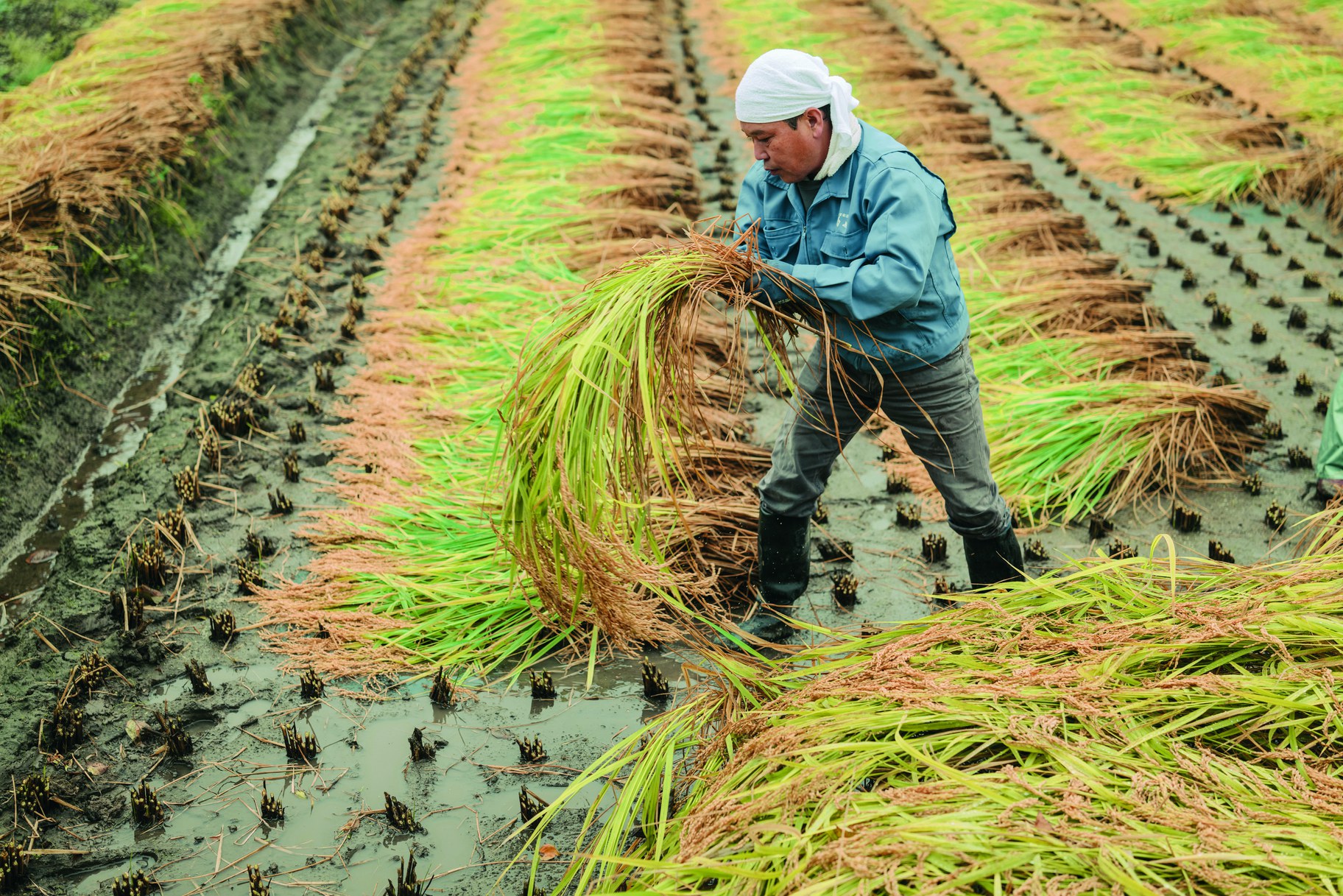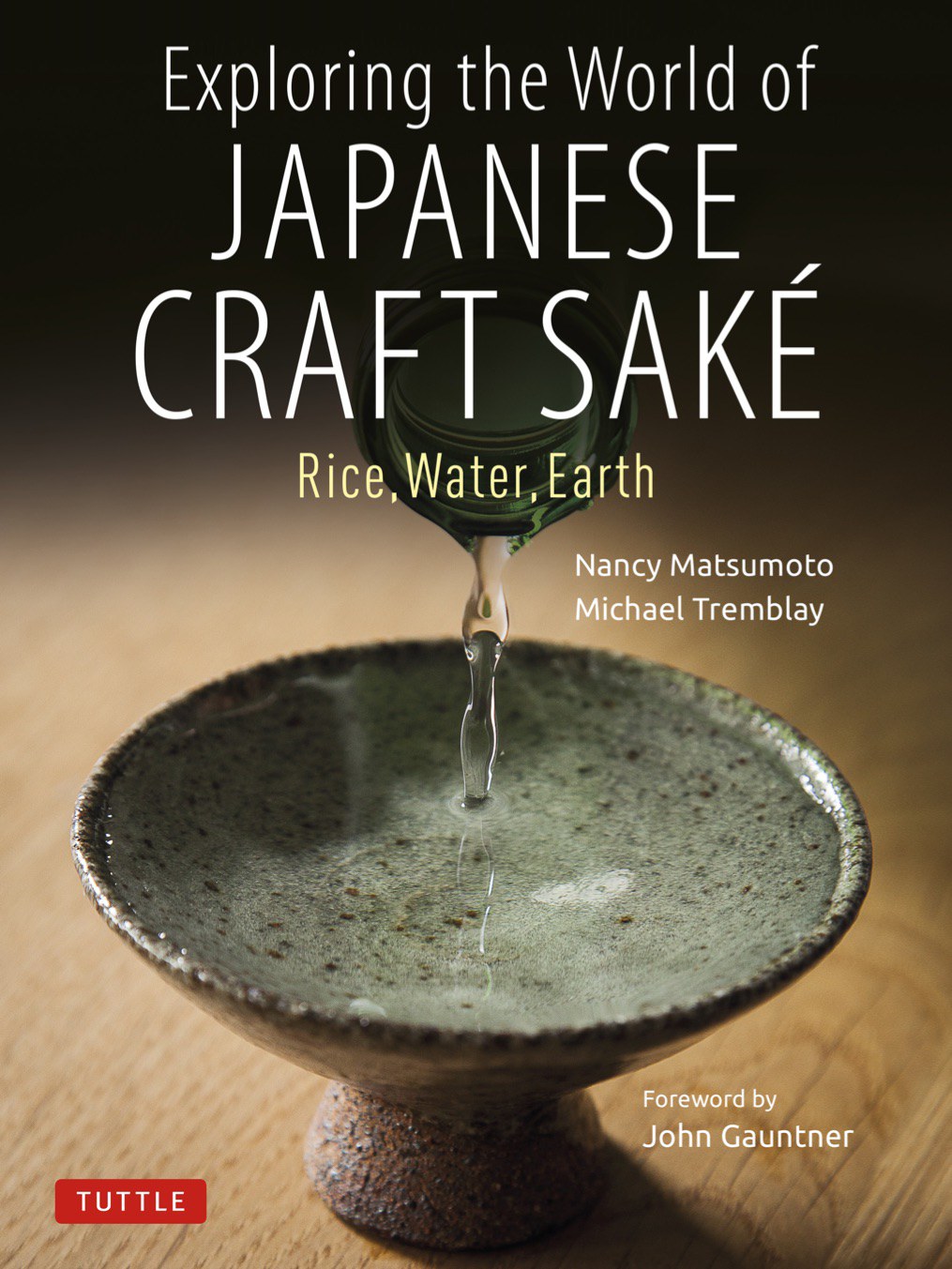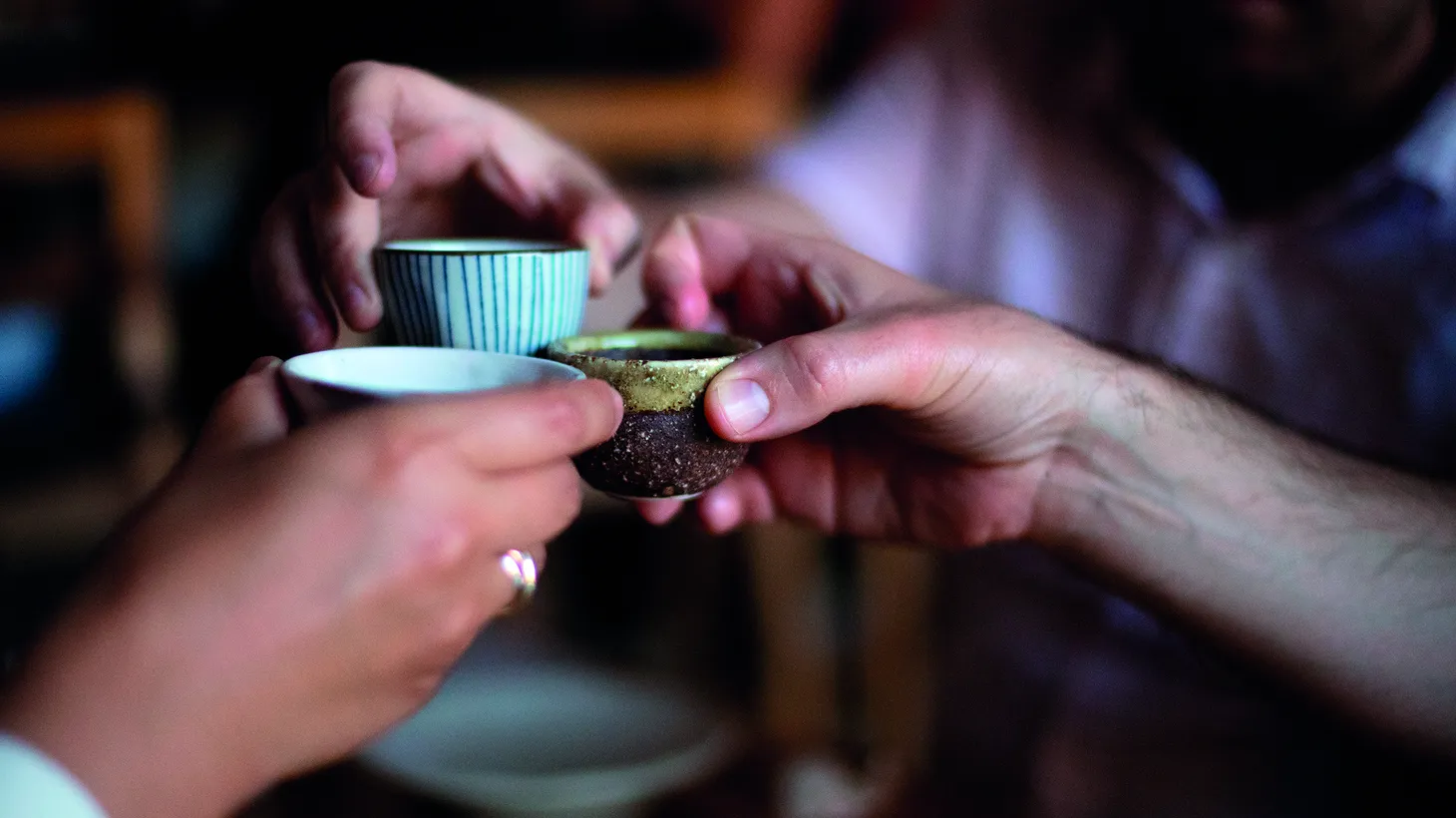Ordering saké can prove just as intimidating as combing over a fancy wine list. But the more you know, the less daunting it becomes. Nancy Masumoto and Michel Tremblay visited 35 artisanal saké breweries while researching the fermented rice beverage for their book “Exploring the World of Japanese Craft Saké.”
This interview has been edited for length and clarity.
KCRW: How long have people been drinking saké in Japan?
Nancy Matsumoto: We say 2600 years in our book. But it goes back way before that, but roughly 2000 years. You can say it's a little murky, but it goes back to the earliest people letting rice ferment on their farms to get something to drink.
How have the production techniques of making saké changed?
Michael Tremblay: The techniques have changed drastically over the last 2600 years. If you go back to the earliest instances of the most primitive versions of saké, there's something called kuchikamizake, where villagers would chew grains and spit them into communal jars and let those ferment. Nowadays, we've got all kinds of modern techniques going on. With the advent of stainless steel fermentation tanks, we are able to make really clean, pure sakés. One of the most exciting technical advances right now is that brewers are learning to polish the rice, not just by percentage, but controlling how much of the right amounts of the proteins and fats that are surrounding the starch chart, which is a really exciting thing that's going on in the saké world.
Explain why polishing the rice is important, and how that impacts the style of saké.
Nancy Matsumoto: Polishing in the modern saké has been a way to get very beautiful floral and fruity aromas – to get more of a refined texture and flavor. And this is in conjunction with the different yeasts that are used. But it tends to be what we call game Ginjo style, which are highly polished. We have a rice polishing ratio – the lower the number, the more highly polished the rice is.

Polishing rice in the modern sake era has been a way to get floral and fruity aromas, and a refined texture and flavor. Photo courtesy of Tuttle Publishing.
Do the different flavors of white and brown rice translate into saké drinking?
Michael Tremblay: There's a difference between saké-specific rice and eating rice. Saké-specific rice tends to have lower protein and fat content, and has a higher starch content, which is what brewers want for saké making. They'll be able to chop up that starch into fermentable sugars and then ferment that sugar into alcohol.
Eating rice has a high protein and fat content, which is really why it's so delicious when you eat it, and it has that nuttiness. Now in saké-specific rice, as the grain grows, the starches move into the middle of the grain forming a starch heart. And that's really important to saké brewers, because that means they have control of how much of the fats and proteins they remove.
Grading saké revolves around how much of those outside of fat and protein husk you remove. In general, if you leave more of that outside husk, you're gonna get more of that cereal, savory, umami component in the saké.
How many strains of saké rice are there?
Michael Tremblay: Right now, there's about 113 saké-specific rice strains used in Japan. And on top of that, there's no shortage of eating rice that is also used for saké making, particularly in the lower grades and of saké making. The reason there's so many is that each rice plant – like the grapevine – likes a certain environment.
In Japan, if you went from the northern city of Asahikawa on the island of Hokkaido, and then you went down to Naha on the islands of Okinawa, you're almost spanning 20 degrees of latitude. There's a lot of different climate zones. These days, there's almost a renaissance of some of the older strains that were very hard to cultivate in the early 1900s.
Given that the rice for varieties are so wedded to different microclimates, are rice farmers affected by climate change?
Nancy Matsumoto: Yes, they really are. It was a question that we asked every brewer who we visited. They all universally said, ‘Yes, it's something that we think about all the time.’ A lot of what's happening is trying to breed climate-resilient rice. A lot of prefectures want to breed a classic saké rice with their own local prefectural type of rice to grade something that is going to be a little more climate-resilient, and suited to their own climate. We’ve even seen breweries moving to the north. There have been a couple examples of that, because they know that it's going to be better for them in the long run climate-wise.

For their book “Exploring the World of Japanese Craft Saké,” Nancy Matsumoto and Michael Tremblay visited over 35 artisanal sake breweries across Japan, the United States, and Canada. Photo courtesy of Tuttle Publishing.
Are there similarities with the craft beer world in the U.S., in the sense that there's great regionality and variety in small makers throughout the country?
Michael Tremblay: In Japan, there's a lot of artisanal jizakes, aka breweries. We can think of that word as meaning craft breweries, or smaller boutique breweries. If you went back 40 years, many breweries made a lot of saké for the large breweries. Newer generations said, ‘Well, we can't just keep making such giant amounts of saké that's just more of a neutral. We want more personality driven saké. To do that, we lower the quantity that we're producing, and we're going to make higher quality sakés.’
Particularly right now Injo has been very popular, and the top grades of saké making tend to be very popular, particularly in export markets. Saké brewers are trying to pivot with what the consumer wants.
Thinking about the craft beer in the U.S. – [for a book-launch presentation] I was updating a map of the world and non-Japanese saké breweries. It's just amazing how many breweries are in the U.S. right now. In the span of two or three years since I've updated this map, I had to add 10 new breweries in the U.S. alone.
Help us decipher the saké label. What should we be looking for?
Nancy Matsumoto: There are a few basic things on the label. First, you want to know who the brewery is. That's listed there, usually the style, or the classification of the saké also. In our handbook, we have a whole section on classifications, including the Kanji characters, so that you can decipher types of saké.
The label might have the rice variety, and the ABV, or the alcohol level. The saké meter of value would talk about how sweet or how dry it is. But that's getting a little technical. I think for just basic enjoyment, know the name of the brewery, the classification, and the polishing rate. Low alcohol saké is becoming much more popular now, so a lot of people want to check the alcohol level.
What are some of the characteristics to keep in mind when tasting saké?
Nancy Matsumoto: You want to look for whether it's sweet or on the dry side. You want to look at the texture – some are really lipid, water-like, and delicate. Others are going to have a real viscosity and a richness. Often the ones that you want warmed up will have that comforting texture to them. Some have very long finishes, very similar to wine, and some are very short. Then the aromas – there are certain yeasts that will give you very amped-up fruit, melon, apple, banana aromas. Then you have the Kimoto and the Yamahai – you will get a lot of savory characteristics on the nose, like cereal, or mushrooms, or Parmesan cheese. The ones that are going to be really high in umami are going to have those, so it's a pretty wide range of aromas. It’s really fun to look for those.

